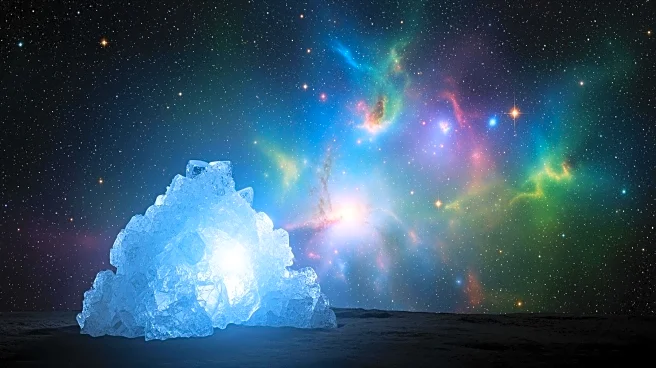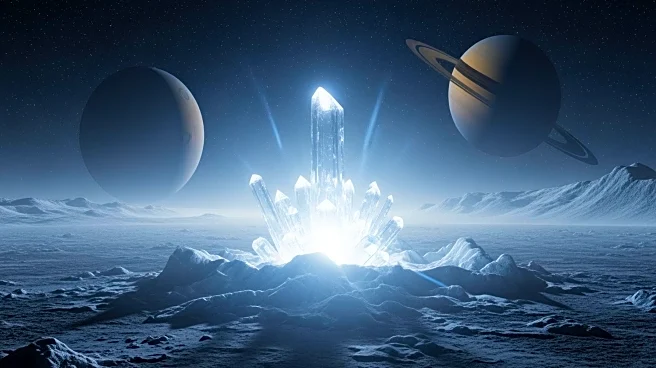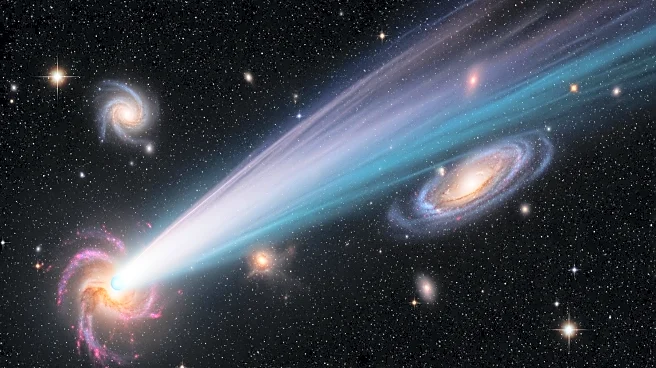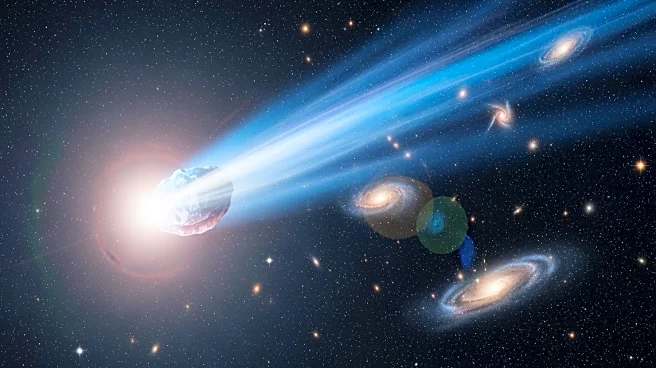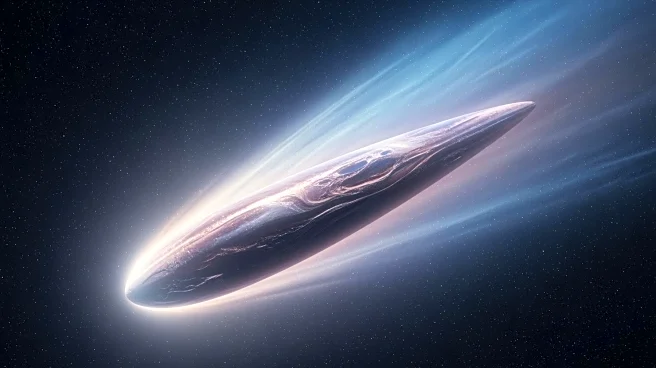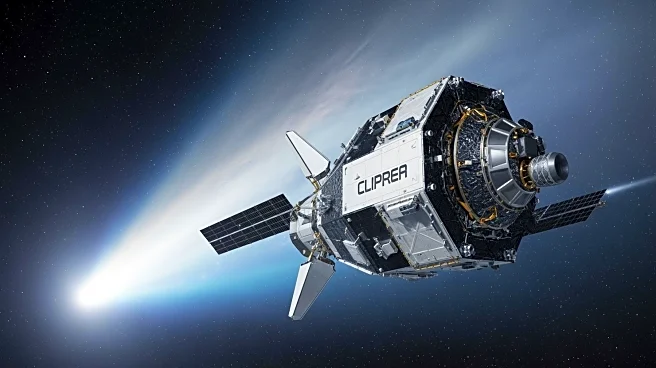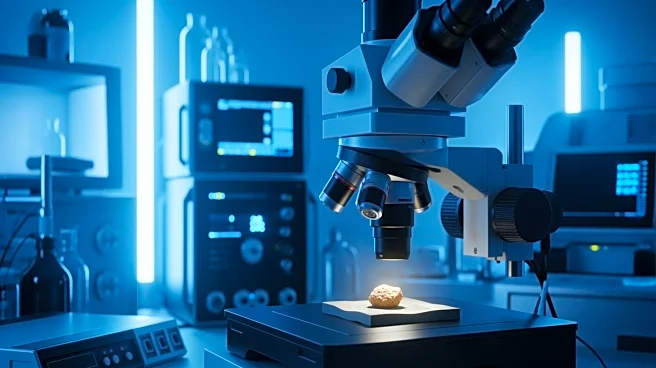What's Happening?
Recent laboratory research has suggested that some organic molecules detected in the plumes of Saturn's moon Enceladus may be the result of natural radiation rather than originating from the moon's subsurface
ocean. This finding complicates the understanding of the astrobiological significance of these compounds. Enceladus, known for its global ocean beneath a frozen crust, ejects material into space through plumes. NASA's Cassini spacecraft, during its missions from 2005 to 2015, detected various organic molecules in these plumes, initially considered evidence of a potentially habitable environment. However, the new study led by planetary scientist Grace Richards indicates that radiation could be responsible for the formation of these molecules. The research involved simulating Enceladus's surface conditions and exposing a mixture of water, carbon dioxide, methane, and ammonia to radiation, resulting in the production of molecules like carbon monoxide and precursors to amino acids.
Why It's Important?
This discovery is significant as it challenges previous assumptions about the origin of organic molecules on Enceladus, a prime target in the search for extraterrestrial life. The presence of organic molecules was initially seen as a sign of a habitable environment, but the new findings suggest that radiation-induced chemical reactions could also produce these compounds. This raises questions about the true source of the molecules and their potential role in biochemistry. Understanding these processes is crucial for interpreting data from future missions to Enceladus and other icy moons, such as NASA's Europa Clipper and ESA's JUICE mission. These missions aim to explore the potential habitability of moons with subsurface oceans, making the study of radiation chemistry essential for planning and data analysis.
What's Next?
Future missions to Enceladus and other icy moons will need to consider the role of radiation in organic molecule formation. The insights from this study will guide the design of instruments and the interpretation of data from these missions. Researchers are already planning potential ESA missions to Enceladus, which may include high-speed flybys through the plumes and possibly a lander on the moon's south pole. These missions will aim to sample the plumes and further investigate the chemical processes occurring on Enceladus. The findings will also be relevant for understanding the intense radiation environments around other moons, such as those orbiting Jupiter.
Beyond the Headlines
The study highlights the complexity of Enceladus's chemistry and the need for caution when linking organic molecules to habitability. It underscores the importance of simulating extraterrestrial environments in laboratories to better understand the processes affecting organic compounds. The research also emphasizes the need for comprehensive studies to explore all potential sources and transformations of organic molecules in space. This approach will help refine the search for life beyond Earth and improve the interpretation of data from future space missions.
